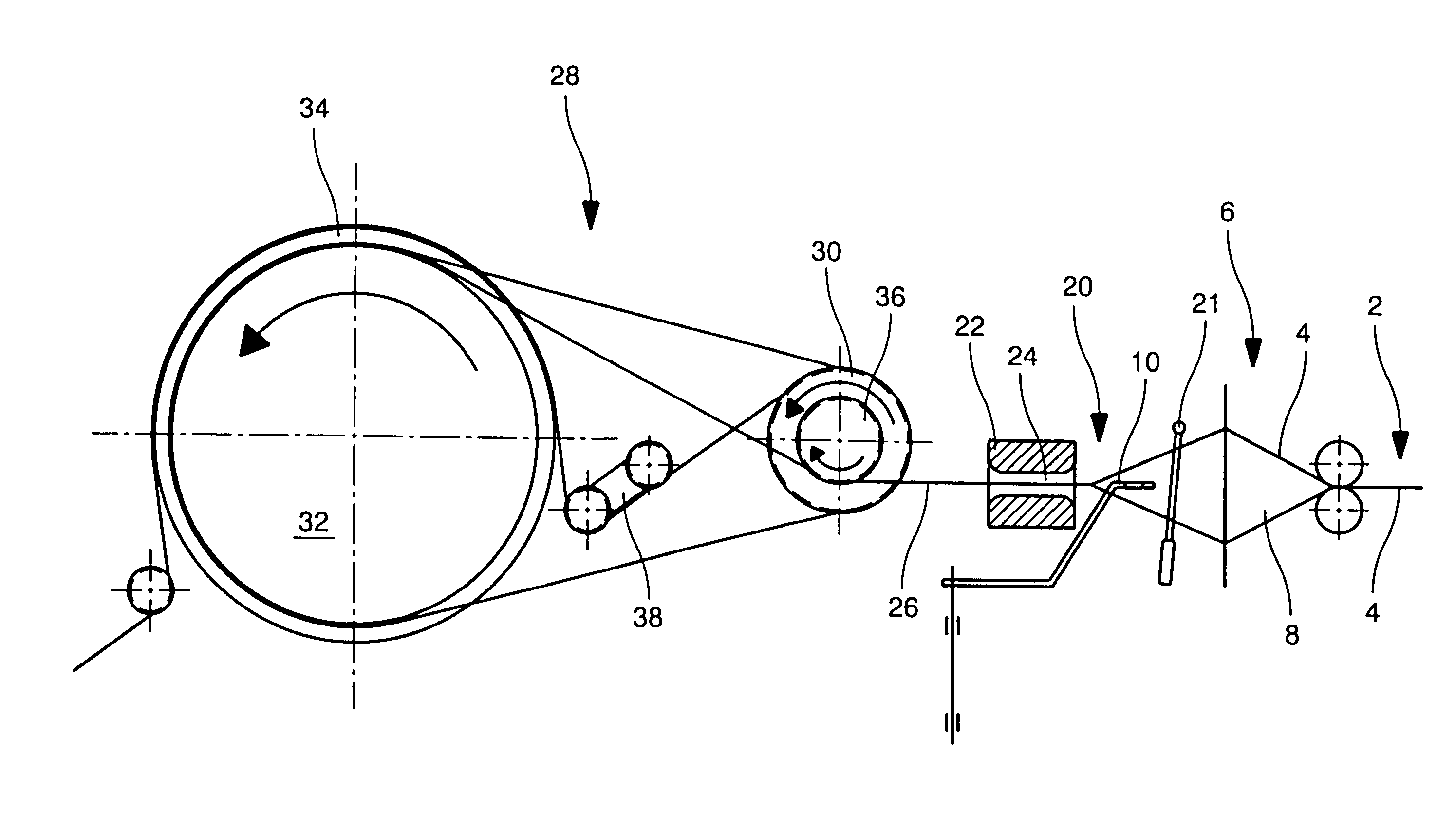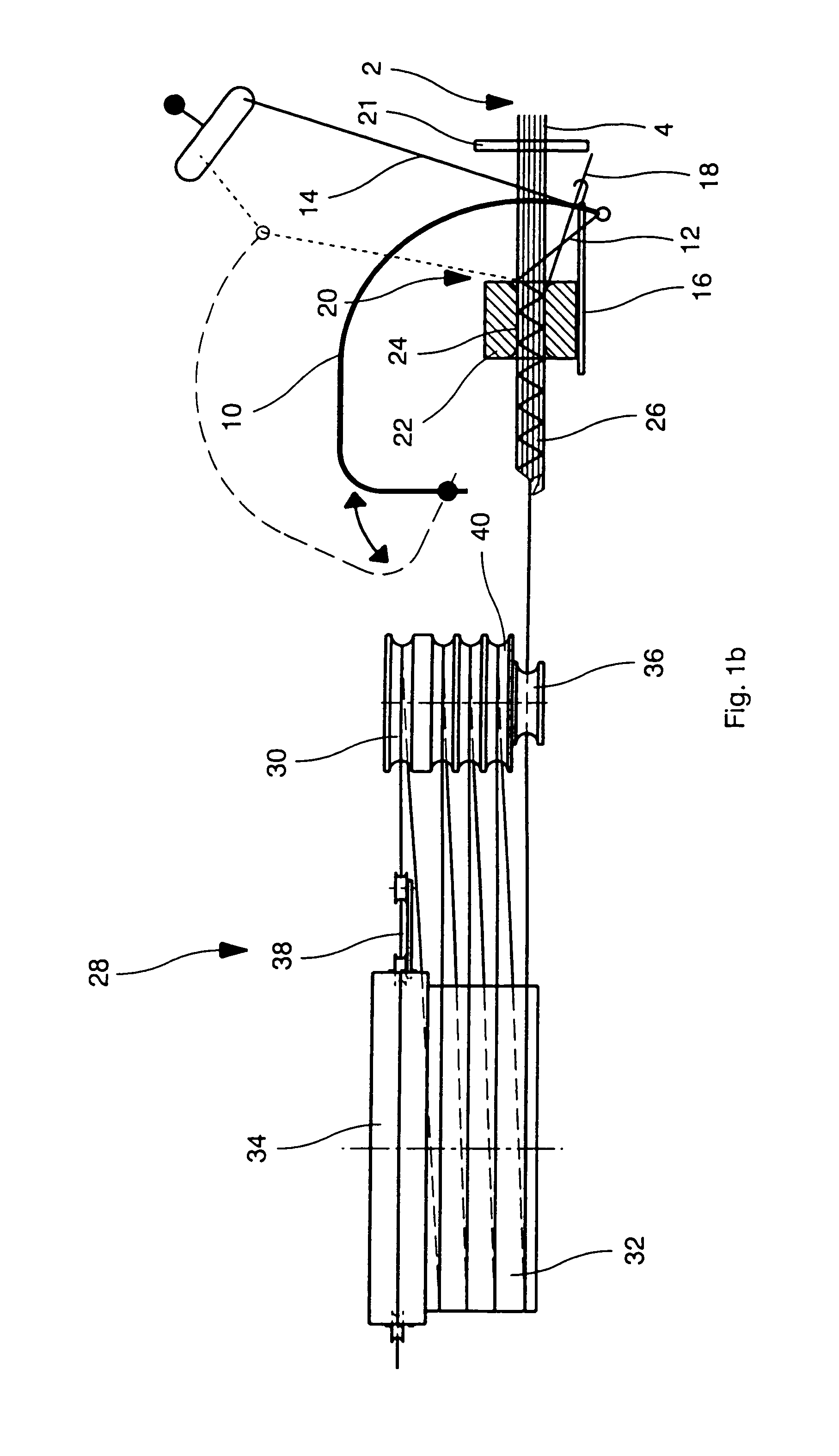Loom for producing a woven article with a profiled cross section, in particular a rope
a technology of profiled cross section and weaving machine, which is applied in the direction of looms, auxiliary devices, textiles and papermaking, etc., can solve the problems of only allowing ropes of limited length, the cross section cannot be changed, and the machine has limited capacity, so as to prevent the deformation of the profile fabric, reduce the stress in the profile fabric produced, and improve the effect of reducing the tension in the profile fabri
- Summary
- Abstract
- Description
- Claims
- Application Information
AI Technical Summary
Benefits of technology
Problems solved by technology
Method used
Image
Examples
Embodiment Construction
[0039]FIGS. 1a and 1b schematically illustrate a side view and a plan view of a weaving machine, which has a device 2 for supplying warp threads 4. By means of a shedding device 6, the warp threads 4 are opened to form a shed 8, so that a weft thread loop 12 of a weft thread 14 can be inserted into the shed 8 by means of a weft insertion needle 10. The weft thread loop 12 is tied off on the side facing away from the insertion side by means of a knitting needle 16. The weft thread loop 12 can be tied off using the weft thread loop which has already been inserted, but tying off preferably takes place with the aid of an auxiliary thread 18. Tying off advantageously takes place such that the inserted weft thread loops 12 are prevented from rippling. At the weaving station 20, the inserted and tied off weft thread loop is beaten up by means of a reed 21 and supplied to the cloth holder 22, which has a shaping opening 24, the opening cross section of which corresponds substantially to the...
PUM
 Login to View More
Login to View More Abstract
Description
Claims
Application Information
 Login to View More
Login to View More - R&D
- Intellectual Property
- Life Sciences
- Materials
- Tech Scout
- Unparalleled Data Quality
- Higher Quality Content
- 60% Fewer Hallucinations
Browse by: Latest US Patents, China's latest patents, Technical Efficacy Thesaurus, Application Domain, Technology Topic, Popular Technical Reports.
© 2025 PatSnap. All rights reserved.Legal|Privacy policy|Modern Slavery Act Transparency Statement|Sitemap|About US| Contact US: help@patsnap.com



